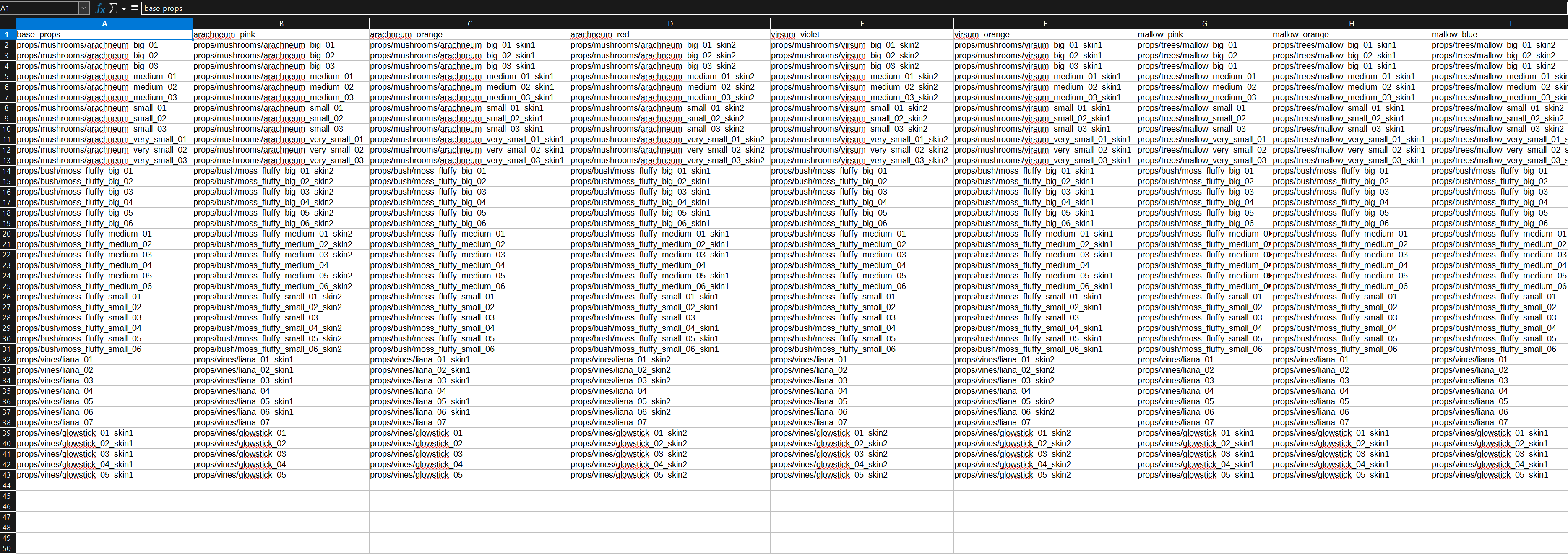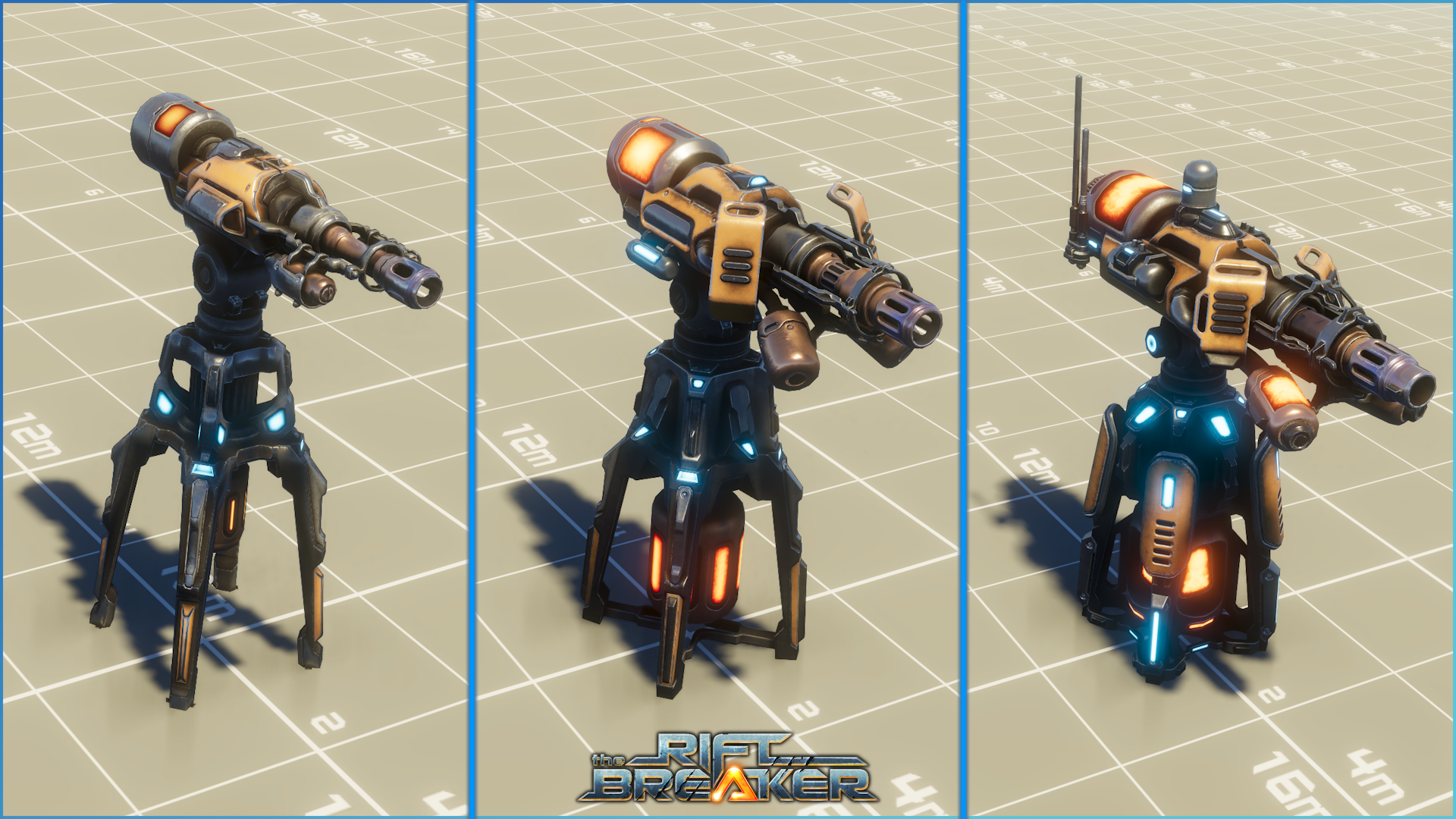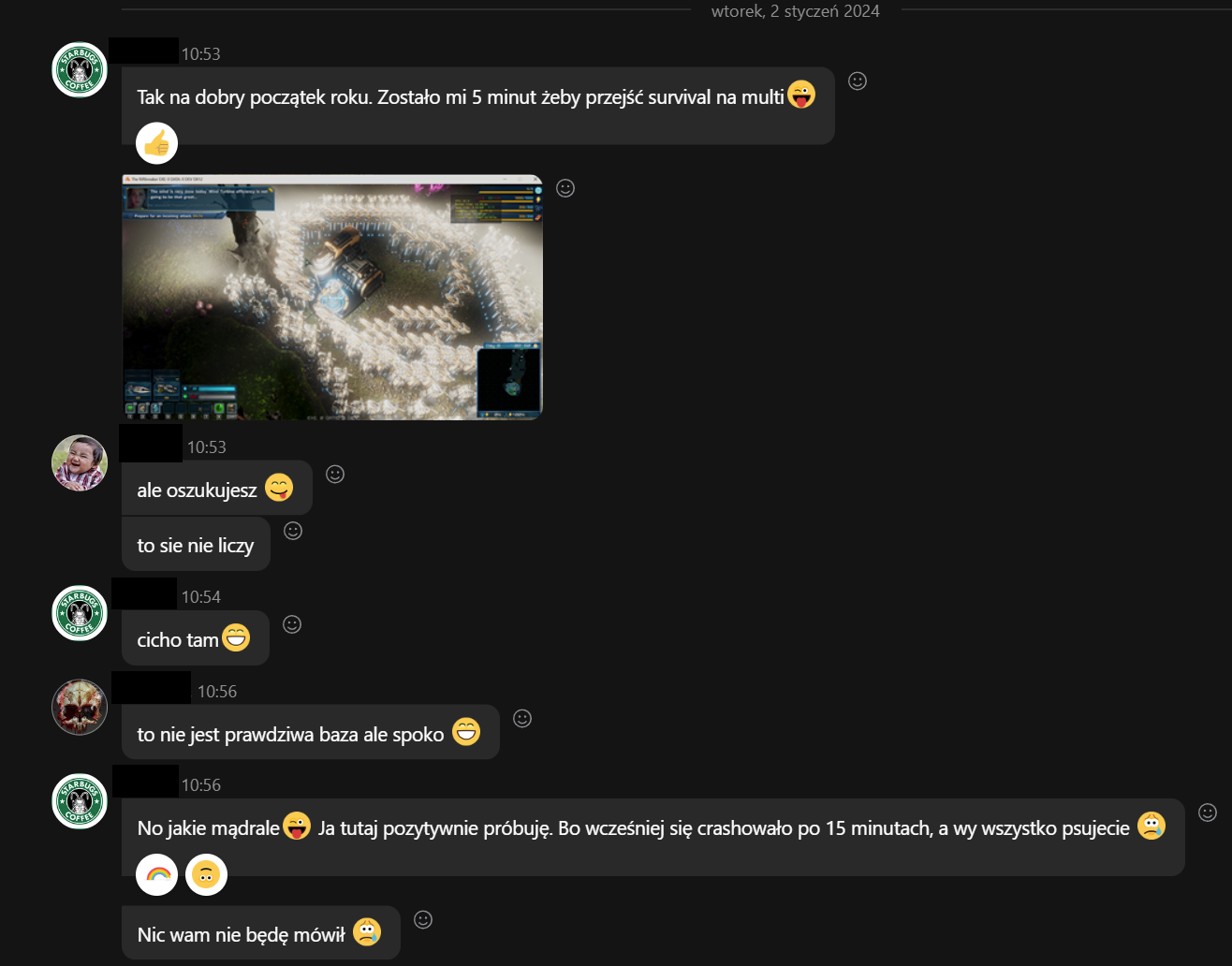
Apr 25, 2024
The Riftbreaker - voidreaver
Hello Riftbreakers!
World Expansion II brought many new enemies into the world of the Riftbreaker. The powerful, death-defying Necrodon was one of them. As you might already know, the Necrodon was a creature that we originally planned to include in the base version of the game. However, due to time constraints, we didn’t manage to flesh out the design and program all of its abilities in time. The Necrodon waited on the sidelines, waiting for a good moment to get a new life, which eventually came with the launch of the Into the Dark World Expansion. You will find a lot of parallels to this story while reading about today’s topic - the Drexolian.

Drexolian base model and several of its animations.
Drexolians were initially designed as one of the enemies of the Tropical Zone biome. They are the masters of disguise. Their bodies resemble a certain species of a tree commonly found in forest areas around the planet (huge reveal: Galatea is round, not flat). Their tall bodies are covered with hardened skin, resembling tree bark. It is quite stiff, which limits the creature’s mobility but gives it incredible resistance to many forms of damage. Drexolians also produce false leaves to give their disguise even more credibility. You shouldn’t be surprised if you build your base around one of these creatures only to find out about that fact hours later.

If you want to continue your deforestation practices, you'd better be ready to fight some angry trees.
These strange creatures are usually not hostile towards other species. Most of the time, they can be found simply resting, hidden among real trees. As long as they are not disturbed, you should be able to walk away unscathed. However, if you step too close for their comfort, there will be consequences. There will be no warning signs, and no lengthy ‘wake-up’ period like in the case of Gnerots. Drexolians will attack you immediately, and they have quite an arsenal of defensive techniques to use.

Oh, you wanted to run? It would be a shame if a wall rose up from the ground behind you.
Drexolians might be slow, but they are a deadly threat, both in close-quarters combat as well as from a distance. If you find yourself in the melee range, the creature will try to beat you to a pulp using its long arms disguised as tree branches. Those things might look brittle, but don’t let that fool you - even Mr. Riggs’ armor will have a hard time withstanding a flurry of hits from these. On the other hand - you are considerably faster, so if you notice an incoming attack, you should have no problems dodging it.

This forest looks like a nice source of plant biomass for a power plant... Nevermind, animal biomass will work as well.
If you get away from the angry tree monster, it’s going to try to chase you while simultaneously showering you with a barrage of splinters. Drexolians are able to rip off thin and razor-sharp pieces of their ‘bark,’ which they throw at enemies with great force. Our happy tree friends will also use this technique to wreck your base from afar. Drexolians might be quite passive in the wild, but you can expect literal hordes of them to join the attack waves during your campaign and survival runs in the Fungal Swamp biome.

Learning to spot camouflaged Drexolians will be a crucial skill in the Fungal Swamp.
The cherry on top of Drexolian’s ability set is tied to its slow movement speed. In order to effectively deal with their prey, these creatures can raise up the ground in front of them to form a temporary cage, greatly limiting the target’s movement. Once you’re walled in, you have only two choices - stand your ground and try to destroy the Drexolian before it destroys you, or break through the wall with your sheer firepower. Theoretically, you could wait until the wall sinks into the ground once more, but you’re likely to have experienced an express teleport back to your HQ in that time (i.e., you got wrecked).

Drexolians will gladly join other creatures and come knocking at the gates of your base if you get on their nerve.
The Drexolian had to wait for a while before the time came for its turn in the production pipeline. The Fungal Swamp biome was the perfect opportunity to bring it back. We’re quite happy with how it turned out, and we hope that you will enjoy the unique challenge it’s going to pose. You can see Drexolians in action during our streams on Tuesdays and Thursdays at 3 PM CEST at www.twitch.tv/exorstudios. We are also getting ready for an experimental release of the World Expansion III - hop on to www.discord.gg/exorstudios to get notified when that happens.
See you soon!
EXOR Studios





















































